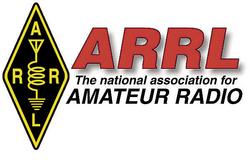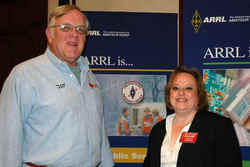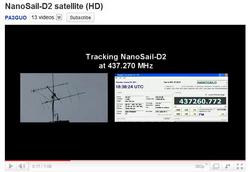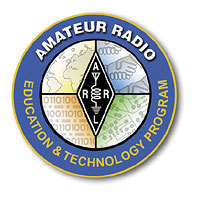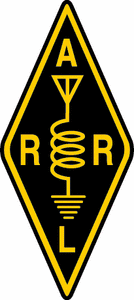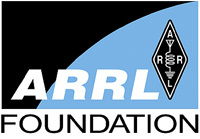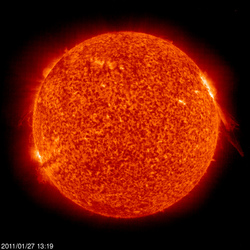 January 27, 2011 John E. Ross, KD8IDJ, Editor
| ||||||||||
There will be no ARRL Audio News this week. The ARRL Audio News will return on Thursday, February 3, 2011. Board of Directors: ARRL Board Holds 2011 Annual Meeting
The ARRL Board of Directors held its 2011 Annual Meeting January 21-22 in Windsor, Connecticut. At the meeting, the Board set its new legislative objectives for the 112th Congress, re-elected the ARRL Executive Committee, bestowed various technical and service awards, approved the organization's financial plan for 2011, set timelines for the ongoing consideration of digital periodicals and more. A detailed look at all the Board's actions, including the official minutes from the meeting, will be forthcoming. Board of Directors: ARRL Hudson Division Director Frank Fallon, N2FF, Retires from ARRL Board of Directors
After more than 14 years as the ARRL Hudson Division Director, Frank Fallon, N2FF, announced his retirement from the Board at the conclusion of the 2011 Annual Meeting of the ARRL Board of Directors. Per the ARRL's Articles of Association, Hudson Division Vice Director Joyce Birmingham, KA2ANF, immediately moved up to the Director position to fill the remainder of Fallon's unexpired three year term, which runs through December 2012. In the coming days, ARRL President Kay Craigie, N3KN, will appoint a new Vice Director to fill Birmingham's unexpired three year term, also running through December 2012. Read more here. ARRL Recognizes: ARRL Board Bestows Awards at 2011 Annual Meeting The ARRL Board of Directors had the pleasure and distinction of bestowing three annual awards at its 2011 Annual Meeting -- the ARRL International Humanitarian Award, the George Hart Distinguished Service Award and the Bill Leonard, W2SKE, Professional Media Award. Read more here. Amateur Radio in Space: NASA's Nanosatellite Heard by Hams When a NASA nanosatellite -- NanoSail-D -- ejected unexpectedly on January 17 from the Fast Affordable Scientific and Technology Satellite (FASTSAT), the agency called upon Amateur Radio operators to help track it. NASA asked radio amateurs to listen on 437.270 MHz for the signal and verify that NanoSail-D was operating. NASA received almost 470 telemetry packets from 11 countries.
The NanoSail-D beacon sent an AX.25 packet every 10 seconds; the packet contained data about the spacecraft's systems operation. Listen here for a recording of the nanosatellite's beacon, made by Hank Hamoen, PA3GUO, on January 21. Once the NanoSail-D team received confirmation that the nanosatellite did indeed ejcect, NanoSail-D principal investigator Dean Alhorn quickly enlisted Alan Sieg, WB5RMG, and Stan Sims, N4PMF, to try to pick up NanoSail-D's radio beacon. Both hams work at the Marshall Space Flight Center in Huntsville, Alabama. "The timing could not have been better," Sieg said. "NanoSail-D was going to track right over Huntsville, and the chance to be the first ones to hear and decode the signal was irresistible." Right before 2300 UTC on January 17, they heard a faint signal. As the spacecraft soared overhead, the signal grew stronger and the operators were able to decode the first packet: NanoSail-D was alive and well. "You could have scraped Dean off the ceiling. He was bouncing around like a new father," Sieg recalled.
According to NASA, the nanosatellite was last heard at 1354 UTC on January 21. Telemetry indicates that the sail deployed on schedule and the satellite is now believed to be out of power, which NASA said was to be expected. NASA is now asking for visual tracking and sighting reports of NanoSail-D, which is about 650 km above the Earth. According to the agency, when the nanosatellite's sail reflects off the Sun, it could be up to 10 times as bright as the planet Venus -- especially later in the mission when the sail descends to lower orbits. You can track NanoSail-D on the web or on your smart phone. NASA estimates that NanoSail-D will remain in low Earth orbit (LEO) between 70 and 120 days, depending on atmospheric conditions. Amateur Radio in the Classroom: ARRL Teachers Institute Now Accepting Applications for 2011 Sessions
The ARRL Education Services Department has announced the 2011 schedule for the Teachers Institute on Wireless Technology (TI) workshop. Offered through the ARRL's Education & Technology Program, the Teachers Institute is a four-day, expenses paid, in-residence learning opportunity designed for motivated teachers and other school staff who want to learn more about wireless technology and bring that knowledge to their students. A variety of topics are covered during the TI, including basic wireless technology literacy, electronics, the science of radio, radio astronomy, how to bring space into the classroom, ham radio operation, introduction to microcontrollers and basic robotics. While participants do not need to have an Amateur Radio license to attend the basic TI sessions, one is required for the advanced (TI-2) session. Read more here. Legislative Matters: ARRL Legislative Newsletter to Be Launched
The inaugural issue of the ARRL Legislative Update -- an HTML newsletter focusing on the ARRL's legislative and advocacy efforts at the national level -- will launch the week of January 31. According to ARRL Regulatory Information Manager Dan Henderson, N1ND, this is not a monthly newsletter, but rather a timely newsletter with the goal to convey important information to the ARRL family. "The legislative process is a fickle thing, Henderson said. "Sometimes it moves as slow as molasses in a New England winter, while at other points, time is of the essence. Developing a newsletter designed to be e-mailed to interested ARRL members is a good way to provide important news and calls for action expediently." The ARRL Legislative Update is an "opt-in" newsletter available to ARRL members. To receive it, go to your Member Profile on the ARRL website and select the tab for "Edit Email Subscriptions." To receive the ARRL Legislative Update, simply check the appropriate box on that page then click "Save" at the bottom. To unsubscribe, follow the same process, but uncheck the box for this newsletter. Focus on Youth: ARRL Seeks New Youth Editor
The ARRL has a proud tradition of promoting youth involvement in Amateur Radio. One of the ways we involve young people in our hobby is through our Youth Editor. This person is responsible for writing a monthly column for the ARRL website about youth and youth activities within the Amateur Radio Service. We are looking for a new Youth Editor. Do you know of someone who would be a good fit for this position? Maybe they hold leadership positions either in their Section or in their local club. The candidate must be an ARRL member and must keep their membership current throughout their tenure in the position. He or she will be required to write a monthly column of at least 1000 words and provide a minimum of three pictures (with captions) for each. For this, they will receive a small stipend for each column. Read more here. ARRL Foundation Scholarship Applications and Transcripts Due February 1
Students planning to apply for the more than 60 scholarships administered by the ARRL Foundation should be aware that the deadline is fast approaching. All materials -- including transcripts -- are due February 1. Beginning this year, applicants must submit all material electronically. No paper forms will be accepted. Read more here. Solar Update
Tad "Like a comet pulled from orbit as it passes a Sun" Cook, K7RA, reports: The average daily sunspot numbers were up for the past week (ending January 26) by more than 11 points to 32.6, compared to the previous week. The average daily solar flux rose more than 3 points to 83.5. The planetary A index average was down 2 points to 2.9, and mid-latitude A index was down 1.5 points to 2.4. The latest prediction from NOAA/USAF shows lower solar activity with solar flux for January 27-28 at 79 and 78, then 76 for January 29 through February 2, 78 on February 3-4 and 80 on February 5-6. They show planetary A index at 5 on January 27-February 2, then 10 on February 3-4 and 7 on February 5. Geophysical Institute Prague sees quiet conditions January 28 through February 1, quiet to unsettled February 2 and unsettled February 3. Look for more information on the ARRL website on Friday, January 28. For more information concerning radio propagation, visit the ARRL Technical Information Service Propagation page. This week's "Tad Cookism" is brought to you by Stephen Schwartz's For Good from the musical Wicked. This Week on the Radio This week:
Next week:
All dates, unless otherwise stated, are UTC. See the ARRL Contest Branch page, the ARRL Contest Update and the WA7BNM Contest Calendar for more info. Looking for a Special Event station? Be sure to check out the ARRL Special Event Stations Web page. Upcoming ARRL Section, State and Division Conventions and Events
To find a convention or hamfest near you, click here. ARRL -- Your One-Stop Resource for Amateur Radio News and Information
Click here to advertise in this newsletter. | ||||||||||
